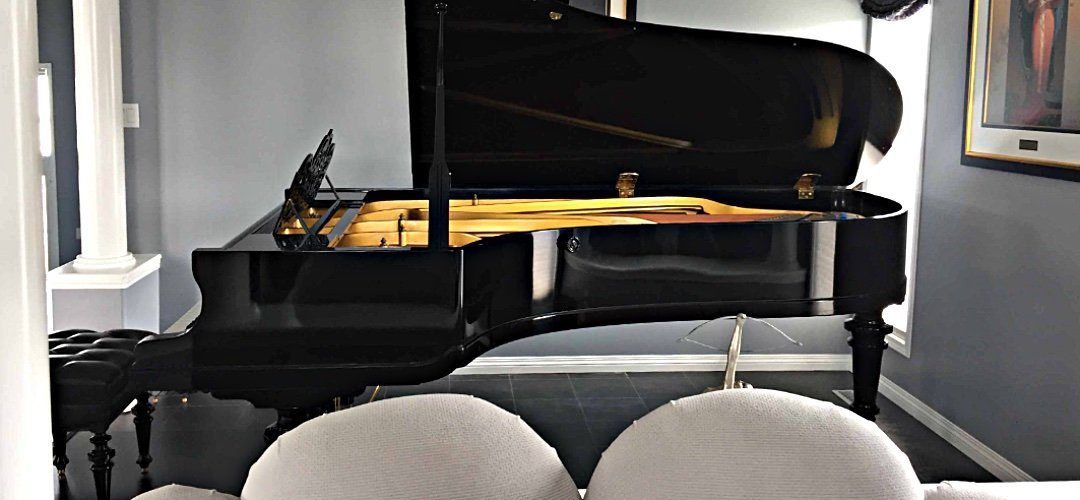A piano should be placed where it can be played most often and best, as this is when it will give the most pleasure. Experience has shown that an unfavourable location in the house can lead to a lack of motivation to play the piano.
The right climate
Nevertheless, this location must also fulfil the climatic conditions that a piano needs. This is sometimes a difficult balancing act between quality of life and consideration for the function and value retention of the piano. Basically, improper location conditions lead to damage to the instrument and to the loss of warranty claims.
The most important thing to note is that the humidity at the installation site should not be below 50% (caution during heating periods) or above 65% (caution in wet weather). Every location should therefore be measured with a professional hygrometer, e.g. from testobefore installation in order to recognise the situation and the need for action. In the piano area, a hygrometer should permanently display the situation clearly.
Air humidification
If there is insufficient humidity in the room where the piano is installed, it is essential to ensure that the room air is humidified immediately. We recommend creating the room humidity and not just providing humidification in the instrument. We therefore also advise against Life Saver systems. In addition to the familiar household remedies such as plants or water bowls etc. (in the room, not in the instrument), digitally controlled humidifier / air conditioning systems can also be used to ensure a consistently good room climate. These humidifiers are available in all designs, e.g. the AOS W2055D for small rooms,and the AirTek PCMH45-WD for large rooms and longer absences, also with large water tanks or even a direct water connection.
Underfloor heating, ovens, doors
If possible, the piano should not be placed directly next to or in front of a radiator. If there is no other option, the heating mode of the radiator should be reduced. The same applies to fireplaces or stoves - no direct radiant heat should reach the piano - and changes in humidity must be carefully monitored and balanced.
It is also not recommended to place the heater in front of doors or under windows. If there is no other option, leave the window open as little as possible, as draughts have a negative effect on temperature and humidity. A light-blocking blind is recommended, as direct sunlight can lead to fading on the surface and, in extreme cases, to damage to the piano.
A fairly even room temperature is favourable, as strong fluctuations and the associated changes in humidity are not good for the piano. Upper floors with sloping ceilings are often a challenge. It is better to place the piano against an interior wall, as the temperature fluctuations are usually lower here. If there is underfloor heating under the piano, it is all the more important to carefully maintain the above humidity values. The rising heat from the underfloor heating will cause the piano to dry out. It would be advisable to switch off the loop under the piano - or use an underlay.
Floor condition
The chosen location should be level (check with a spirit level). If a piano is standing at an angle, it can tilt and the frame can warp in the long term. An uneven floor can be levelled out and protected with coasters. Any long standing or moving of a piano without a thick and soft base will leave marks in the floor. In old or fragile buildings, the load-bearing capacity must be taken into account in view of the heavy weight.


